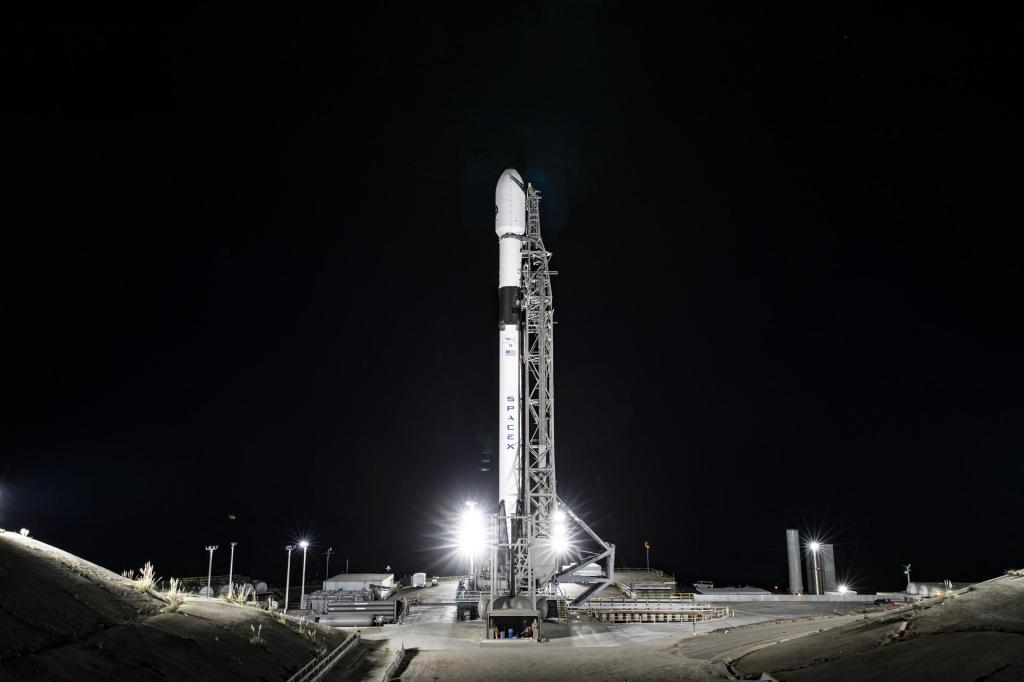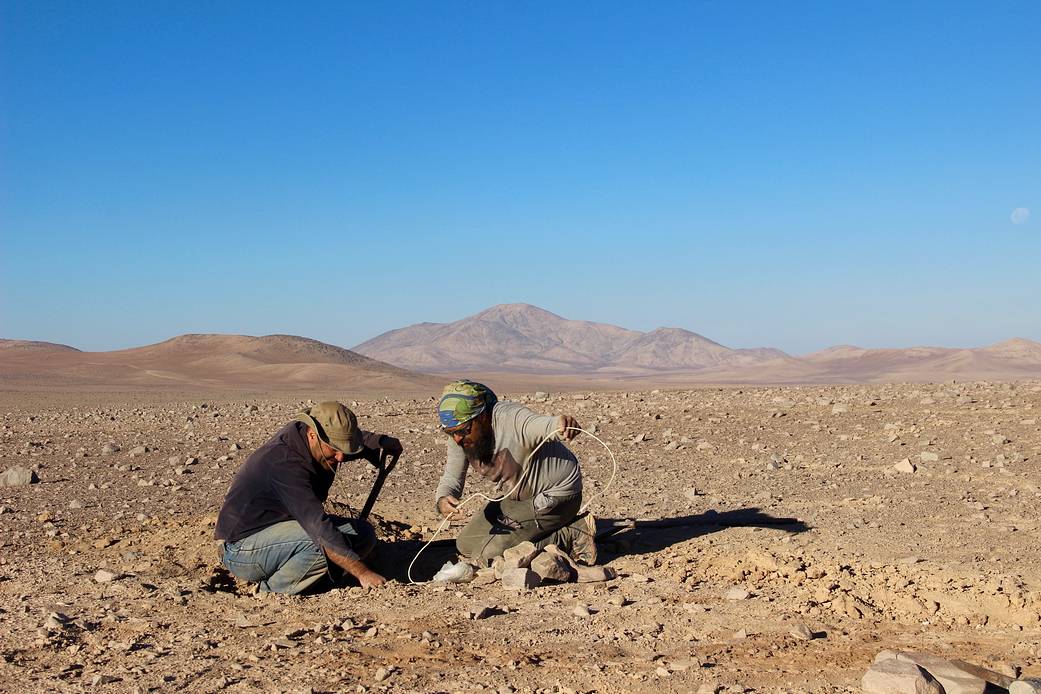Two members of the ARADS science team recover the sensors that they had buried in the Atacama Desert one year earlier. These devices tracked the temperature and moisture levels hourly in the desert soil over that time — data that the scientists will now download and analyze for a better understanding of this environment and the very few microorganisms that call it home. Pictured are Alfonso Davila, a research scientist at NASA’s Ames Research Center, and Jonathan García, a graduate student at the University of Antofagasta in Chile.
+++
The Atacama Rover Astrobiology Drilling Studies, or ARADS, project is designing tools and techniques that could be used to search for life one day on Mars or other places in the Solar System. The team’s prototype rover combines the ability to move across the surface, drill down to collect soil samples, and feed them to several life-detection instruments on board. The extreme conditions of Chile’s Atacama Desert provide one of the most Mars-like environments on Earth, where the team can test and refine these technologies and methods.
ARADS is led by NASA’s Ames Research Center in California’s Silicon Valley. Partners include NASA centers Goddard Space Flight Center in Greenbelt, Maryland, and the Jet Propulsion Laboratory in Pasadena, California, as well as Johns Hopkins University in Baltimore, Maryland, Honeybee Robotics in New York, the University of Antofagasta and CampoAlto SpA, both in Chile, and Spain’s Center for Astrobiology.





























